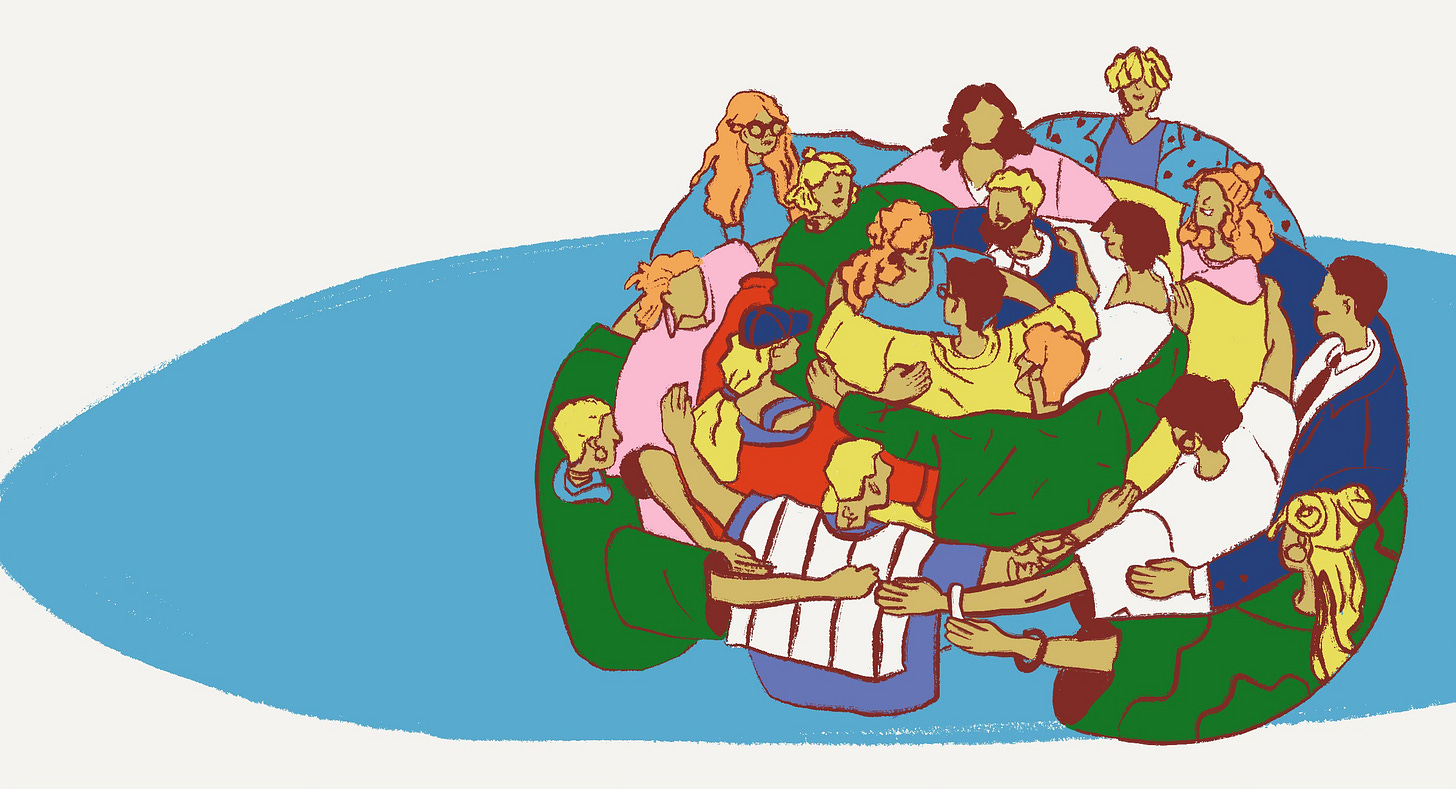The lifecycle of connection
Five design principles for building self-sustaining communities.
Most design-built communities don’t last. Once a founder steps back, the energy fades and connection between friends dissipates. Yet, some communities that transcend their beginnings. They pass the threshold of transition and alchemise into self-sustaining ecosystems. Culture is carried forward not by one central figure, but by collaborative design.
The founder problem is this: founders are not forever. So, design must be. There is a lifecycle problem where communities that once ignited by a founder — the social glue and connector — must inevitably learn to transcend beyond reliance on them. Communities die when the emotional labour is centralised. Longevity in social groups is about structure, not frequency or sentiment. Mutual initiation, mindfulness, and self-awareness enables a feedback culture where concerns surface early and respectfully. What creates cultural glue are rituals of connection: set gatherings, shared projects, inside jokes, recurring traditions. Over time, strong bonds between individuals emerge, beyond the founding bond between founder and ‘everyone else’. This robustness allows that for when things go wrong (and they will), people lean in, reflect, and rebuild.
For those terrified of conflict or shame, it seems immensely counterintuitive to go against their go-to psychology of dodging social rupture. And then if questioned to not blurt out the oblivion of “I didn’t know it was that bad” or “I didn’t want to say the wrong thing”. These statements that allow one to avoid accountability without seeming cruel and maintaining a good-person self-image. But this is the antithesis of what enables lasting communities, and by indulging in these it pushes that reality further away. You engaging in the complexities of social rupture creates the fertile conditions for seeds to sprout. It doesn’t feel that way but there is power in recognising that by dismantling the optics of goodness you allow actual goodness to flourish — real community resilience.
We know that the conditions by which childhood trauma develops in people is not so much in the occurrence of what happens. The trauma — or healing — occurs in how the parent addresses and acknowledges how they failed. When conflict is handled well, relationships strengthen. If you are lifting weights at the gym, your body does not get fitter in the moment. You are purposely tearing the muscle, eliciting trauma, so that it repairs stronger and healthier. This is what we aim for in conflict management.
And if you avoid rupture entirely, for fear of saying the wrong thing, your silence unequivocally guarantees the loudest wrong thing is now said. Strong cultures galvanise together after a rupture and come out stronger.
Designing communities for longevity looks like many things, but here are five foundational components:
Rituals: shared practices that self-perpetuate without needing prompts.
Reciprocity norms: societal expectations around giving and receiving energy, care, and initiative.
Role rotation: where many people host, hold, and lead many people; not just one central figure.
Distributed memory: a shared internal culture that keeps meaning alive. Language, stories, jokes.
Adaptive infrastructure: systems fluid enough to move with the inevitabilities of change, and firm enough to hold its essence.
A constructed community, built through effort, must eventually become emergent. The goal is not endless management but designed ease. When power is shared, rituals embedded, and values lived rather than enforced, communities begin to run on their own gravity. This is collaboration in is most native form: freedom by design.



